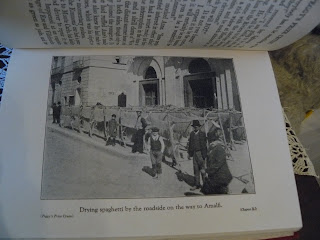

The Pensionnaires The Story of an American Girl who took a Voice to Europe and Found Many Things by Albert R Carman published by Herbert B Turner & Co. Boston, 1903. Cpoyright 190 by Herbert B Turner & Co. Published October 1903.
The boarders or “pensionnaires” brought together in the “pensions” of the European continent include natives of the whole world and life in these wholly original houses brings about cosmopolitanism and leads to associations and friendships that shape many lives. The chief pensionnaires are a New York mother and daughter studying singing. The reader meets them in Dresden, Milan and Switzerland. the singer is followed by a German idealist who teaches her to put soul into her phenomenal and perfectly trained voice. - The American catalogue ... July 1, 1876-Dec. 31, 1910 By Leypoldt Frederick, Lynds Eugene Jones, Richard Rogers Bowker, Augusta Isabella
Preface:
Hors D’Oeuvre
The Continental “pension” is like nothing Anglo-Saxon. Leaf over its guest-book and you find a cross-section of civilization; sit at its table, and you taste reminiscences of a French hotel; turn to conversation between courses, and you are in the dining saloon of an Atlantic “liner.”
It is a democracy with opinions about Botticelli; an aristocracy in exile and without leisure; an European Concert, free from jealousies and welcoming an American invasion which, in turn, anxiously repudiates the Monroe doctrine as applied to tourists.
Though an assemblage of strangers, with barely a prejudice in common, speaking one another’s language so badly that each must explain eventually in his own what he meant to say, international friendships are formed with the loaning of a guidebook, and new-comers are taken shopping on the second day. After four days together at table d’hote, companionable people are ready to plan a month’s tour with a division of carriage hire and a “pooling” of tastes.
Intolerance - that besetting sin of the sure-footed - finds the air of a “pension” either fatal or infuriating. There is no place like it for getting into the shoes of impossible people. When the “unspeakable Turk” sits next one at table, and speaks English, he is discovered to be human and likeable, and to have his point of view. he is not a Puritan perversely gone wrong, but a child of another world.
One deception the “pension” practices. it cheats the hasty into believing that they have penetrated a native home. A home it is, like no other place of public entertainment. The hostess and - more especially - the host always seem to be people of leisure; and to feel an entertainer’s duty toward their guests. it may, after all, be a native home, you are tempted to think - yet that bookcase of English novels! - Alas!
It is by no means a hotel; not even a rural French hotel, with Madame and her sewing in the office, and Monsieur coming in smiling from under his chef’s cap to grow superlative over the pet “lions” of the neighborhood, and the slim dark daughter lighting your fire at night with a coquettish consciousness. Madame is in the drawing-room with you, Monsieur welcomes you to his library, the slim dark daughter can sing if you really wish it.
It is not “lodgings” - no, not by a million times. Compared with that, it is a palatial hotel with six courses at dinner and a foreign grace of service.
It is, in short, not to be stated in terms of anything else. It is a “pension.” And long may its mistress sit in her drawing-room to bargain with us over the cost of fires! And long may the “pensionnaires” chatter across its table of the wonders of Europe and the weariness they induce.











